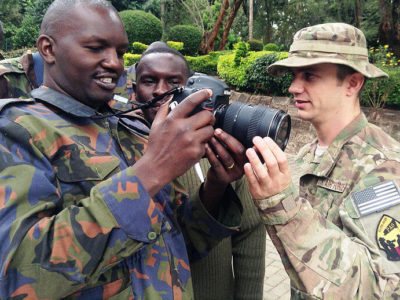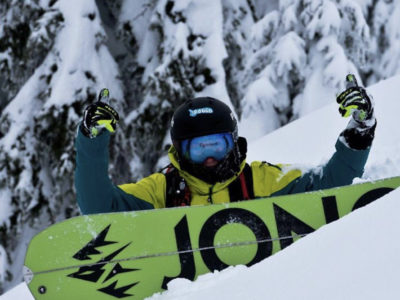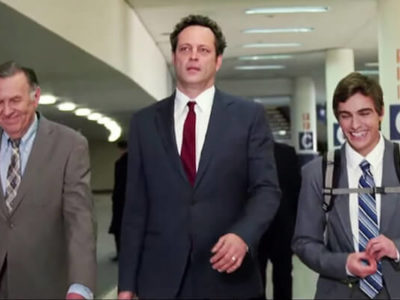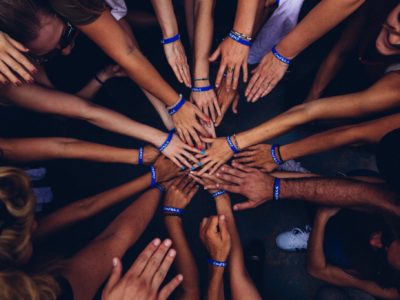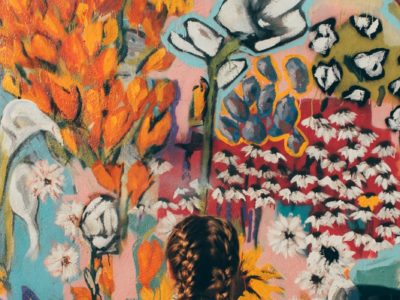Photojournalism combines all of the ideal elements of art and reporting in any forum, like sports or fashion. Photojournalists find themselves lured into the major and career because of their ability to convey a message through a single, captured moment. Just think–you could be the next Lynsey Addario who transcends selfies by exposing Instagram users to serious and intense conflicts across the world. Majoring in photojournalism creates a mixed bag of opportunities to become instrumental in spreading the latest and most instrumental news.
What you’ll be doing
Many students probably have a preconceived notion about majoring in photojournalism (AKA it’s easy). But this stereotype quickly proves false once students experience the workload, dedication outside of the classroom and constant professor critiques. So the next time you knock a communications major, remember their influence on media–just like in Happy Gilmore when Steve Buscemi comprises a hit list, watch out for journalists using their words or pictures to get back at you down the road. Although a Buscemi-like hit list is less than plausible, pay special attention to photojournalists who follow in the steps of the famous W. Eugene Smith and his war reportage seen through powerful mediums of photography.
The classes you’ll take

While students will have to manage the workload, deadlines and ample amount of activity outside of the classroom, potential photojournalists should also look forward to hands-on, creative and intimate class experiences. “The photo story class was interesting because it was basically an independent study in which…we each picked one subject to follow through the course of the semester to produce a photo story by the end,” Penn State alumnus Nick Thomas said. He said it provided him with a more professional idea of deadlines and adjusting to the change of ideas. “The multimedia projects class was interesting to me…because it really showed us that as photojournalism is more than just the photos, but how we can incorporate the photos into a larger digital package.” In addition to those two classes, he even raved about his journalism entrepreneurship class that provided students with the knowledge to adapt to the changing status of journalism.
Internships for this major
The mixture of art and news in the field of photojournalism offers students the opportunity to apply to a number of amazing internships. Internships vary from newspapers to magazines, or even joining a film crew to contribute to the next ground-breaking documentary. Notable newspapers, like the New York Times and the Boston Globe (#goals), hire paid interns every year to develop their photojournalism skills, but National Geographic offers one of the most coveted positions to one lucky aspiring photographer annually; the photographer must win the College Photographer of the Year Award to gain entry into the program. Although some internships are highly lauded, Penn State photojournalism professor John Beale said, “I began trying to get my work published when I was 17. While in college I worked for several small newspapers. I barely got paid while I was in school but one of the papers hired me full time when I graduated.” Moral of the story: work hard, gain experience and appreciate the internships and opportunities given to you because who knows what can happen.
Career Opportunities

1. Print Photographer
Through many forums, print photographers capture photographs of live events and individuals. “I started [at PSU’s The Daily Collegian] as a lowly photo candidate, and basically worked every position on photo staff that I could, so junior, senior photographer, as well as taking the leadership role of photo editor for two semesters, and then photo chief for a semester after,” said recent PSU alumni Nick Thomas. “That was probably one of the best opportunities I had as a student, because it was a hands-on experience and accounts for a majority of my portfolio now.” Prepare for deadlines and irregular work hours.
2. Documentary Filmmaker
Specialized filmmakers produce films with emotional or impactful content. They either produce the entire film or contribute images and videos to add to specific pieces. “I’ve also attended Penn States first short documentary workshop,” said Penn State senior Cameron Hart. “During the workshop I filmed a short documentary about a small town adult football team of misfits who just wanted to play football again.” The job condition can invoke stress and emotion in its dangerous and cut-throat environment.
3. Layout Eeditor
Usually found in the field of magazines and newspapers, layout editors take responsibility for creating specific formats of media forums. Layout editors are heavily involved with computers and manipulating and critiquing type size, font, spacing and style.
4. Freelance Photojournalist
Freelance photojournalists essentially perform the same job as newspaper and magazine photographers, but do not limit themselves to the confines of one job and instead submit their work to different forums. “Photo editors for national publications review portfolios from freelancers and they make assignments to photographers they feel will do the best job on a specific assignment,” Beale said. Clearly over the course of his career he experienced success as his photographs have been published in Sports Illustrated and The New York Times.
5. Professor
Teachers and professors utilize their own experiences and opportunities to teach potential photojournalists. Professors advise, guide and teach students, while remaining up to date on certain teaching strategies and technologies, which is essential with the ever-changing journalism courses. Professors are also responsible for a number of university organizations, clubs and programs that further a student’s capacity for success.
Reviews
“With photojournalism, you get access to a whole other world compared to reporters. For example, when covering sports, you’re right in the action and get to capture moments with your camera that is worth seeing visually that you just don’t experience when reading an article. Not many people appreciate what photojournalists do and I think it’s an important job because we’re not just clicking buttons on a camera, but instead we’re taking photos of historical moments that we will look back on through photography.” — Penn State senior Antonella Crescimbeni
“Can you imagine viewing a web page that has no photos or videos? Photography skills are more important than ever. But someone owning an iPhone doesn’t make them a competent photographer any more than someone owning a hammer making them a skilled carpenter.” — Indiana University alumnus John Beale
“Everyday in photojournalism is different and being able to adapt to your surroundings and the various people you meet is really important. There are some things you just can’t learn in a classroom, like seeing things from other people’s perspectives. In photojournalism you meet all walks of life from the poorest to the richest people in a community and being able to see things from your subject’s point of view is important in telling stories.” — Penn State senior Cameron Hart

